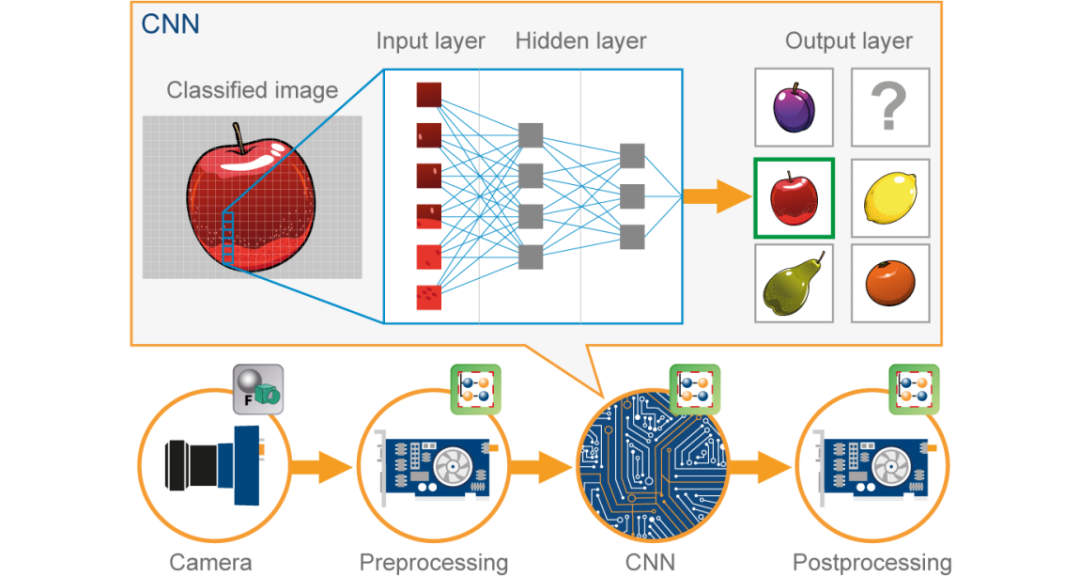使用Python和TensorFlow构建图像识别系统
发布时间: 2024-09-01 13:47:02 阅读量: 317 订阅数: 64 


# 1. 图像识别系统概述
在现代社会,图像识别系统扮演着越来越重要的角色,它广泛应用于工业检测、自动驾驶、医疗影像分析以及安防监控等领域。图像识别,顾名思义,是指计算机通过算法来识别图像内容的过程,这一过程可能涉及到对图片中的对象、场景和活动的分类、检测、追踪等任务。
## 1.1 图像识别的简史
图像识别的历史可以追溯到20世纪50年代,但直到21世纪初,随着深度学习技术的崛起,图像识别技术才实现了重大突破。深度学习特别是卷积神经网络(CNN)的发展,极大地提高了图像识别的准确率,使得计算机视觉在实际应用中变得可行。
## 1.2 图像识别技术的应用实例
一个典型的应用例子是面部识别技术,该技术已经广泛集成到智能手机和安全系统中,为个人身份验证提供了快速、便捷的解决方案。另一个例子是医疗影像分析,深度学习模型可以辅助医生诊断疾病,提高诊断的准确性。
## 1.3 图像识别系统的组成
一个完整的图像识别系统通常包括以下四个主要组件:
- **图像输入**:图像获取可以是实时视频流或静态图片。
- **预处理**:对输入图像进行标准化处理,如缩放、裁剪、归一化等。
- **模型处理**:使用深度学习算法处理预处理过的图像数据,执行识别任务。
- **结果输出**:识别结果的展示,可以是文字描述、标签或直接的操作指令。
图像识别技术的准确性和效率受到多种因素的影响,如图像质量、模型的架构与复杂度以及处理硬件的性能。随着技术的不断演进,图像识别系统在各行各业中发挥着越来越重要的作用。
# 2. Python编程基础
### 2.1 Python语言的特点和优势
Python作为一种高级编程语言,自1991年发布以来,已经在各个领域得到广泛应用。它的设计哲学强调代码的可读性和简洁的语法(尤其是使用空格缩进来定义代码块,而不是使用大括号或关键字)。Python的这种特性使得它在快速开发领域大放异彩。
#### 2.1.1 简洁易读的语法
Python的语法简洁明了,非常接近英语,这让程序员更容易专注于问题解决而不是语法细节。举个简单的例子:
```python
# Python中打印“Hello, World!”的代码
print("Hello, World!")
```
这行代码直接利用了 `print` 函数来输出字符串,而无需声明数据类型或者其他复杂的配置。这与诸如C或Java这类语言相比,代码的可读性和易编写性有显著的提高。
#### 2.1.2 强大的标准库和第三方库支持
Python的标准库提供了许多有用的模块,涵盖了网络通信、文件处理、字符串处理等众多方面。而Python的第三方库生态系统则更加强大,如 `numpy` 和 `pandas` 提供了高级的数据处理功能,`scikit-learn` 和 `TensorFlow` 则为机器学习和深度学习提供了强大的支持。这些库大大降低了进行复杂计算和数据处理的门槛。
### 2.2 Python中的数据结构
Python支持丰富的数据结构,这些结构使得数据组织和处理更加灵活和高效。
#### 2.2.1 列表、元组、字典和集合的使用
- 列表(List)是一个可变的序列,可以包含任意类型的数据。
- 元组(Tuple)与列表类似,但一旦创建不可修改。
- 字典(Dictionary)是一种映射类型,存储键值对。
- 集合(Set)是一个无序的不重复元素集。
这些数据结构的使用场景和性能各不相同,例如列表适合需要频繁修改的场景,而元组适合需要保持数据不可变性的场景。
```python
# 示例:列表、元组、字典和集合的使用
my_list = [1, 2, 3, 'Python']
my_tuple = (1, 2, 3, 'Python')
my_dict = {'one': 1, 'two': 2, 'three': 3}
my_set = {1, 2, 3}
print(my_list) # 输出列表
print(my_tuple) # 输出元组
print(my_dict) # 输出字典
print(my_set) # 输出集合
```
#### 2.2.2 高级数据结构:栈、队列和树
除了基本的数据结构,Python还支持构建如栈、队列和树这样的高级数据结构。这些结构在算法设计和数据组织中非常重要。
- 栈(Stack)是一种后进先出(LIFO)的数据结构。
- 队列(Queue)是一种先进先出(FIFO)的数据结构。
- 树(Tree)是一种分层数据的抽象模型。
实现这些数据结构可以让编程更加高效,并且在图像识别系统中用于数据组织和处理。
```python
# 示例:栈的实现
class Stack:
def __init__(self):
self.items = []
def push(self, item):
self.items.append(item)
def pop(self):
return self.items.pop()
def peek(self):
return self.items[-1]
def is_empty(self):
return len(self.items) == 0
stack = Stack()
stack.push(1)
stack.push(2)
print(stack.peek()) # 输出栈顶元素
print(stack.pop()) # 输出并移除栈顶元素
```
通过这些基本的编程知识,我们为进一步学习图像处理和深度学习框架打下了坚实的基础。在下一节中,我们将探讨如何使用Python中的函数和模块来编写更加规范和高效的代码。
# 3. TensorFlow框架入门
## 3.1 TensorFlow的核心概念
### 3.1.1 张量(Tensor)和计算图(Graph)
在TensorFlow的世界里,一切都是关于张量的。张量是数学上的概念,是一种包含多维数组的容器。在TensorFlow中,张量可以看作是一个n维数组或者一个向量,包含了数据的值,同时也包含了数据在图中的流动路径。
```python
import tensorflow as tf
# 创建一个常量张量
tensor = tf.constant([[1, 2], [3, 4]])
print(tensor)
```
上述代码创建了一个2x2的矩阵(二维张量),这是张量在内存中的表示。计算图是一种在图数据结构中表示计算的模型,TensorFlow使用图来表示计算任务,将计算表示为在图中流动的数据。这种图表示让TensorFlow可以执行优化操作,比如并行执行、分布式处理,也可以优化执行效率。
### 3.1.2 会话(Session)和变量(Variable)
在TensorFlow中,会话是运行计算图的环境。为了获取张量的值,需要在一个会话(session)中运行它们。会话是一个封装了运行操作的上下文环境,必须通过它来执行定义好的操作。
```python
# 创建一个会话
with tf.Session() as sess:
# 运行张量
result = sess.run(tensor)
print(result)
```
变量(Variable)是TensorFlow用来存储在图执行过程中可以修改的值的。例如,对于权重和偏置等可以训练的参数,使用变量是最合适的方式。变量需要初始化,在会话中,可以对变量进行赋值操作。
```python
# 创建变量
W = tf.Variable(tf.zeros([2,2]), name="weights")
b = tf.Variable(tf.zeros([2]), name="bias")
# 初始化所有全局变量
init = tf.global_variables_initializer()
# 在会话中运行初始化
sess.run(init)
print("权重:\n", sess.run(W))
print("偏置:\n", sess.run(b))
```
在此段代码中,创建了两个变量W和b,并通过`tf.global_variables_initializer()`初始化了所有变量。在会话中运行`init`操作,可以确保这些变量已经被初始化。之后,就可以获取这些变量在计算图中的值了。
## 3.2 TensorFlow中的操作和函数
### 3.2.1 常用数学运算和激活函数
TensorFlow提供了一系列的数学运算函数,包括加、减、乘、除等基本运算以及矩阵运算。这些操作可以非常方便地在张量上进行。
```python
# 常用数学运算
a = tf.constant([[1, 2], [3, 4]])
b = tf.constant([[5, 6], [7, 8]])
# 矩阵加法
c = tf.add(a, b)
# 矩阵乘法
d = tf.matmul(a, b)
with tf.Session() as sess:
print("矩阵加法结果:\n", sess.run(c))
print("矩阵乘法结果:\n", sess.run(d))
```
激活函数是深度学习中用于引入非线性的一种方法,常用于神经网络的层之间。TensorFlow内置了许多激活函数,如`tf.nn.relu`、`tf.nn.sigmoid`和`tf.nn.tanh`等。
```python
# 激活函数
input = tf.constant([-3.0, -1.0, 0.0, 1.0, 3.0])
# ReLU激活函数
relu = tf.nn.relu(input)
# Sigmoid激活函数
sigmoid = tf.nn.sigmoid(input)
# Tanh激活函数
tanh = tf.nn.tanh(input)
with tf.Session() as sess:
print("ReLU输出:\n", sess.run(relu))
print("Sigmoid输出:\n", sess.run(sigmoid))
print("Tanh输出:\n", sess.run(tanh))
```
上述代码演示了如何对输入的张量使用不同的激活函数。这些激活函数在构建深度学习模型时是非常重要的,因为它们能够帮助模型学习和表达复杂的函数。
### 3.2.2 数据流图的构建和调试
TensorFlow通过定义数据流图来表示计算。数据流图是一个有向图,图中的节点代表操作,而边代表节点之间传递的多维数据数组,也就是张量。构建数据流图是构建TensorFlow模型的基础。
```python
# 构建简单的数据流图
a = tf.constant(2.0)
b = tf.constant(3.0)
c = a
```
0
0





